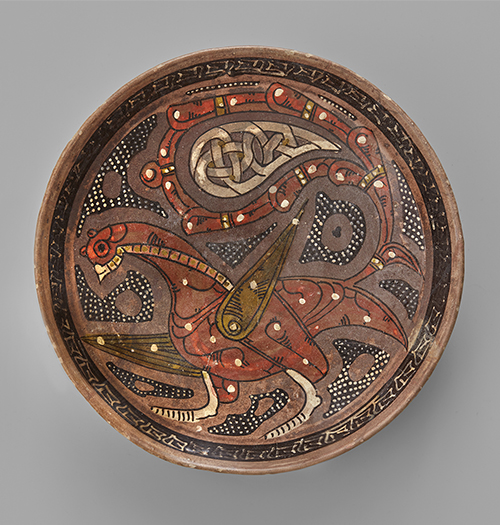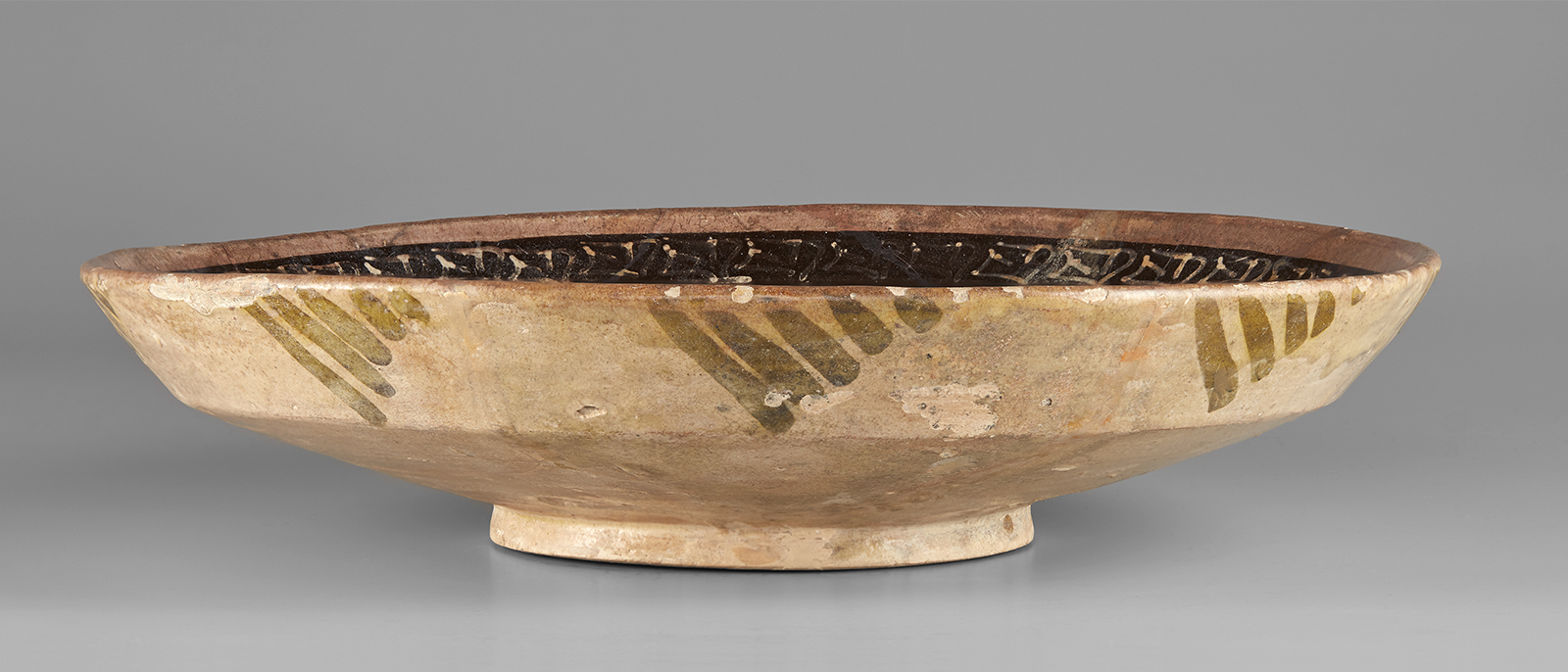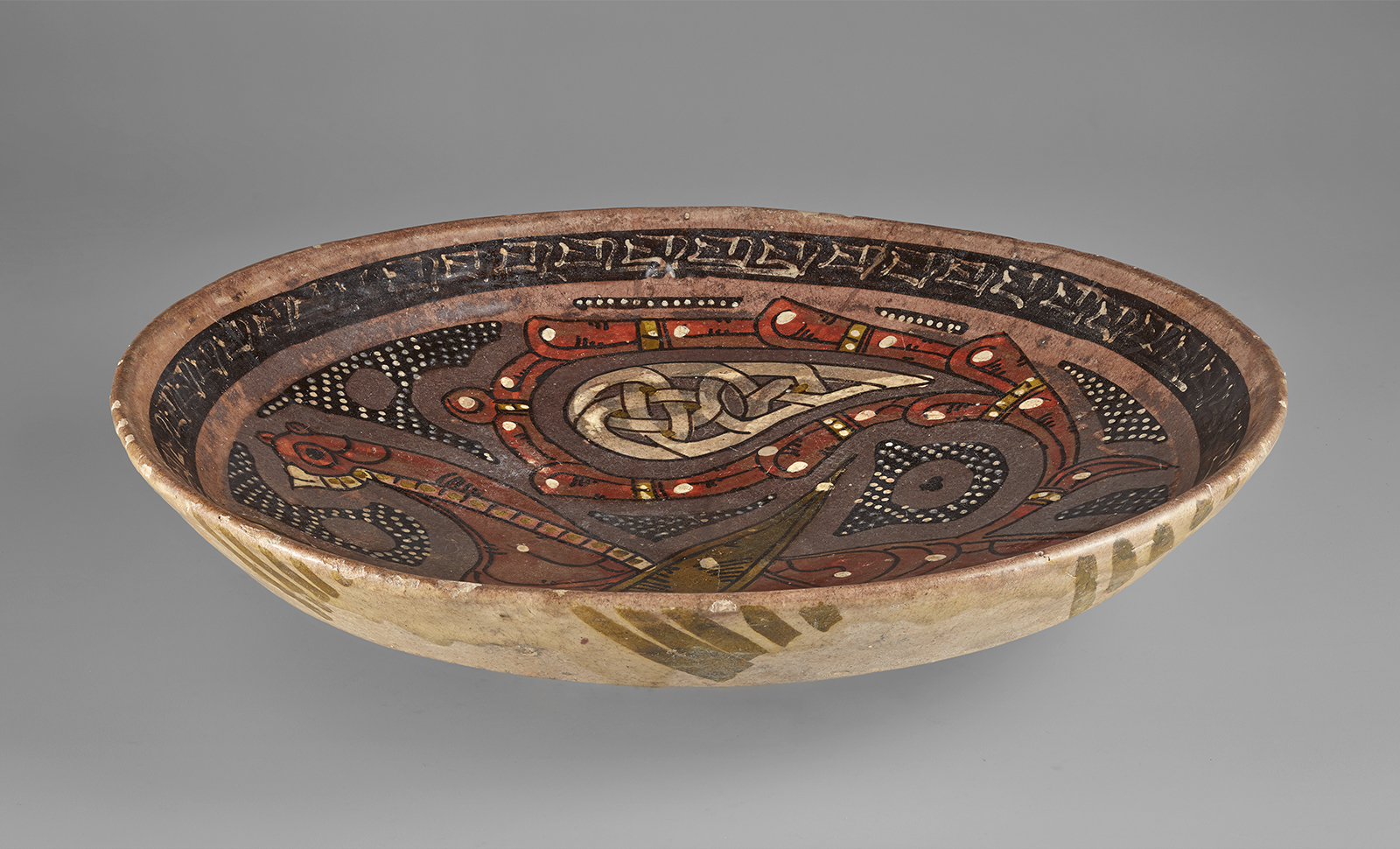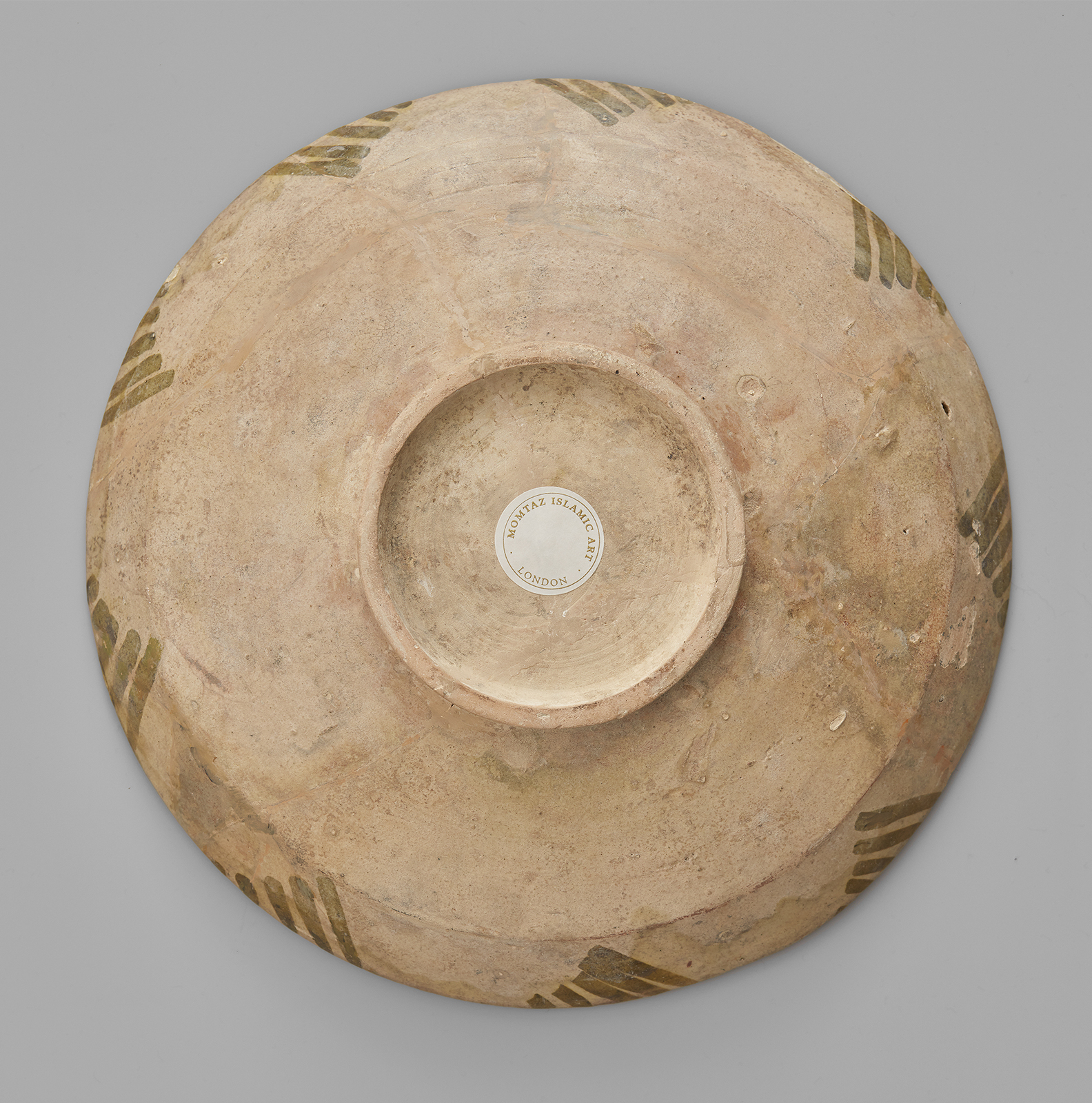Click on the image to zoom
Bowl
- Accession Number:AKM543
- Place:Iran
- Dimensions:28 cm × 6.3 cm
- Date:10th Century
- Materials and Technique:Earthenware, polychrome slip decoration under a transparent glaze
Under the rulership of the Samanids (819–1005), whose vast empire stretched from Northeastern Iran to Afghanistan and Central Asia,[1] artisans in the 10th and 11th centuries produced ceramics of polychrome slip-covered earthenware. Especially active in Samarqand (in the old quarter, known as Afrasiyab) and Nishapur (the most important international trading centre of the Samanid Empire), they used the simplest of materials. Yet they demonstrated remarkable ingenuity, creating high-quality wares in a wide variety of designs, from figural to abstract to calligraphic.
Further Reading
This bowl [2] in the Aga Khan Museum Collection combines all three design types. Pseudo inscriptions run along the bowl’s rim. Abstract motifs surround a stylized bird—perhaps a peacock—with a long tail raised above its back. Enclosed in an almond-shaped interlace pattern, this tail expands across the bowl’s centre. The bird walks to the left with its head slightly bowed in a gesture that accentuates the graceful curve of its neck.
Native to India, peacocks have long held a place in Iranian culture. Since the pre-Islamic period, they have been associated with the concepts of Paradise and royalty.[3] After the advent of Islam, they continued to feature in both literary and visual arts, including poetry, ceramics, metalwork, and textiles. For instance, the 12th-century Iranian poet Farid ad-Din Attar, born in Nishapur, mentions in his epic poem The Conference of the Birds that the peacock was one of the creatures who, like Adam and Eve, was banished from Paradise. Attar adds that if the peacock can defeat the serpent and resist its temptations, it can return to Paradise.[4] The peacock’s unmelodious and mournful cry has in fact been interpreted as an expression of grief following its exile.[5] Given these associations, the depiction of the bird in this earthenware bowl may represent the peacock’s exile from Paradise and its hope for redemption.[6]
- Filiz Çakır Phillip
Notes
1. Originally an Iranian family, the Samanids were in the service of the Abbasid Caliph to govern eastern Iran and western Central Asia. Major cultural centres were Khorasan and Transoxiana. Besides Northeastern Iran, Afghanistan, and Pakistan, the vast empire surrounded Tajikistan, Turkmenistan, Uzbekistan, Kyrgyzstan, and parts of Kazakhstan.
2. Relevant publications by the Aga Khan Trust for Culture concerning this object include The Worlds of Islam in the Collection of the Aga Khan Museum (Barcelona: The Aga Khan Trust for Culture and Fundacion La Caixa, 2009), 172, no. 125 and Spirit & Life: Masterpieces of Islamic Art from the Aga Khan Museum Collection (Geneva: 2007), 141, no. 106.
3. The colourful and fan-shaped tail of the peacock was associated with cosmic entities and the heavens, which, in turn, held connotations of royal power. The most well-known artwork in this regard is perhaps the 17th-century Peacock Throne of Mughal Emperor of Shah Jahan in the Red Fort of Delhi.
4. The peacock, flattered by the serpent, allowed the devil to enter paradise and tempt the first couple to their fall. The peacock was cast out of paradise, and has grieved to return ever since. See Farid-od-Din ‘Attar et al., The Canticle of the Birds, 102, 104, 113.
5. See Sheila Blair and Jonathan M. Bloom, eds. Images of Paradise in Islamic Art, Hood Museum of Art, 81 and 92.
6. For a discussion of the peacock in a Christian context, see Oya Pancaroğlu, “Feasts of Nishapur: Cultural Resonances of Tenth-Century Ceramic Production in Khurasan.”
References
The Worlds of Islam in the Collection of the Aga Khan Museum. Barcelona: The Aga Khan Trust for Culture and Fundacion La Caixa, 2009. ISBN: 9788499000138
ʻAṭṭār, Farīd al-Dīn, Michael A. Barry, Laylī Anvar, Afkham Darbandi, and Dick Davis. The Canticle of the Birds: Illustrated through Persian and Eastern Islamic Art. Paris: Diane de Selliers, 2013. ISBN:9782364370319
Blair, Sheila and Jonathan M. Bloom, eds. Images of Paradise in Islamic Art, Hood Museum of Art. Austin: University of Texas Press, 1991. ISBN: 9780944722084
Ettinghausen, Richard, Oleg Grabar, and Marilyn Jenkins-Medina. Islamic Art and Architecture, 650–1250. 2nd ed. New Haven: Yale University Press, 2001. ISBN:9780300088694
Hillenbrand, Robert. Islamic Art and Architecture (1999). London: Thames and Hudson, 2002. ISBN: 9780500203057
Ilyasov, Jangar Ya. “Exotic Images: On a New Group of Glazed Pottery of the 10th and 11th Century.” Journal of the David Collection 4 (2014): 51–87
Pancaroğlu, Oya. "Feasts of Nishapur: Cultural Resonances of Tenth-Century Ceramic Production in Khurasan." In Harmony: The Norma Jean Calderwood Collection of Islamic Art. Cambridge, MA: Harvard Art Museums, 2013, 25–35. ISBN: 9781891771620
Note: This online resource is reviewed and updated on an ongoing basis. We are committed to improving this information and will revise and update knowledge about this object as it becomes available.








